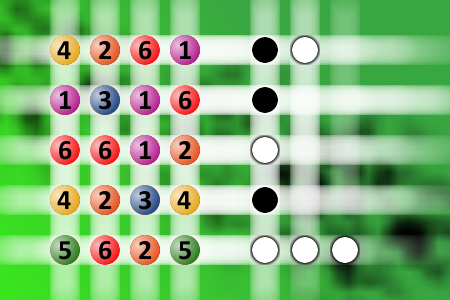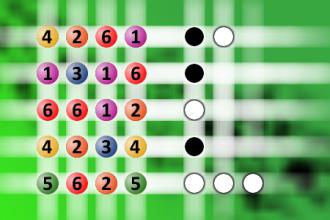What a winning combination?
The computer chose a secret code (sequence of 4 digits from 1 to 6). Your goal is to find that code. Black circles indicate the number of hits on the right spot. White circles indicate the number of hits on the wrong spot.Correct answers: 72
The first user who solved this task is Donya Sayah30.
#brainteasers #mastermind

There were five people aboard...
There were five people aboard an airplane having engine trouble getting ready to crash, however, there were only four parachutes. Everyone wondered what should be done to determine who should get the parachutes. One person said that he was the smartest thing that hit the face of the Earth, and that he was too smart to die. So, he took one of the parachutes and jumped out of the aircraft. The second person said that she was too important to die, she had children and a family to take care of, and they depended on her to care for them. So, she took one of the parachutes and jumped out of the aircraft. The third person said that he was too important to die because his family depended on him for survival. He was the head of household and the sole bread winner. So, he took one of the parachutes and jumped out of the aircraft. Finally, there were only two people left, and one parachute. One person was a 12 year old boy, and the other was a 65 year old man. The old man said, "Well son, I have lived a good life, and you are too young to die, you have a long life ahead of you. So, you take the last parachute. The boy asked, "Why, Sir?" The old man said, "Well, there is only one parachute left." The little lad said, "Sir there are really two parachutes left." The old gentlemen asked, excitedly, "Yeah? How?" "Well," replied the boy, "you know that guy who thought he was the smartest and greatest thing that hit the face of the Earth? He grabbed my backpack."

